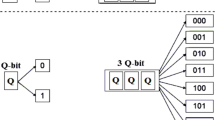Summary
We report here on the establishment of aCydia pomonella (Cp) hybrid cell line IZD-Cp 4/13. As there have been no reports on somatic cell fusion involving lepidopteran cell lines so far, we had to develop an appropriate fusion procedure. We first tried—but without much success—to obtain HAT (hypoxanthine, aminopterin and thymidine)- or TAM (thymidine, adenine, and methotrexate)-selectable strains of the threeCydia pomonella cell lines IZD-Cp 2202, IZD-Cp 0508 and Cp 169. We then tried and succeeded in developing a fusion procedure based on the use of biochemically blocked permanent cells as one partner in the fusion. Biochemically inhibited IZD-Cp 2202 cells and embryonic Cp cells were hybridized by polyethyleneglycol treatment. The cells of the hybrid cell line IZD-Cp 4/13 differ from the permanent parental cells (cell line IZD-Cp 2202) with respect to morphology, DNA content isoenzyme patterns, and response to challenge with theChoristoneura murinana nuclear polyhedrosis virus.
Similar content being viewed by others
References
Chen, T. R. In situ detection of mycoplasma contamination in cell cultures by fluorescent Hoechst 333258 stain. Exp. Cell Res. 104:255–262; 1977.
Darai, G.; Zoeller, L.; Fluegel, R. M.; et al. Mink lung cells as a tool for detection of Mycoplasma hyorhinis contamination in cell cultures and virus stocks. In Vitro 19:7–15; 1983.
Ellender, R.; Middlebrooks, B. L.; Toom, P. M. Simple isoelectric focusing method to quantitate LDH isoenzyme in cultured cells for cell characterization. TCA Manual 3(2):593–596; 1977.
Goldsby, R. A.; Osborne, B. A.; Simpson, E.; et al. Hybrid cell lines with T-cell characteristics. Nature 267:707–708; 1977.
Hink, W. F.; Ellis, B. J. 3. Establishment and characterization of two new cell lines (Cp-1268 and Cp-169) from the codling moth,Carpocapsa pomonella. Curr. Top. Microbiol. Immunol. 55:19–28; 1971.
Hunter, L. Glucose-6-phosphate dehydrogenase isoenzymes in cultured human cell lines: Separation by isoelectric focusing. Anal. Biochem. 101:78–87; 1980.
Kobayashi, Y.; Asada, M.; Higuchi, M.; et al. Human T cell hybridomas producing lymphokines. I. Establishment and characterization of human T cell hybridomas producing lymphotoxin and migration inhibitory factor. J. Immunol. 128:2714–2718; 1982.
Kontiainen, S.; Simpson, E.; Bohrer, E.; et al. T-cell lines producing antigen-specific suppressor factor. Nature 274:477–480; 1978.
Littlefield, J. W. Selection of hybrids from matings of fibroblasts in vitro and their presumed recombinants. Science 145:709–710; 1964.
Maskos, C. B.; Miltenburger, H. G. Isoenzym-Analyse von Insektenzellen durch isoelektrische Fokussierung in Duennschicht-Polyacrylamid-Gelen. Mitt. Dtsch. Ges. Allg. Angew. Ent. 4:44–47; 1983.
Miltenburger, H. G.; David, P.; Mahr, U.; et al. Ueber die Erstellung von Lepidopteren-Dauerzellinien und die in vitro-Replikation von insektenpathogenen Biren. I. Mamestra brassicae L. (Kohleule)-Zellinien und NPV-Replikation. Z. Ang. Entomol. 82:306–323; 1977.
Miltenburger H. G.; Naser, W. L.; Harvey, J. P.; et al. The cellular substrate: A very important requirement for baculovirus in vitro replication. Naturforsch 39c:993–1002; 1984.
Saga, S.; Tsutsui, J.; Imai, M.; et al. The enhanced expression of cellular fibronectin in mouse-mouse somatic cell hybrids. Exp. Cell Res. 141:478–483; 1982.
Simms, N. Methods for detection of enzymatic activity after electrophoresis on polyacrylamide gel in Drosophila species. Nature 207:757–758; 1965.
Wyss, C. TAM selection of Drosophila somatic cell hybrids. Somatic Cell Genet. 5:29–37; 1979.
Wyss, C. Loss of ecdysterone sensitivity of a Drosophila cell line after hybridization with embryonic cells. Exp. Cell Res. 125:121–126; 1979.
Author information
Authors and Affiliations
Additional information
This work was supported by the Bundesministerium fuer Forschung und Technologie, Bonn, FRG.
Rights and permissions
About this article
Cite this article
Miltenburger, H.G., Naser, W.L. & Schliermann, M.G. Establishment of a lepidopteran hybrid cell line by use of a biochemical blocking method. In Vitro Cell Dev Biol 21, 433–438 (1985). https://doi.org/10.1007/BF02620830
Received:
Accepted:
Issue Date:
DOI: https://doi.org/10.1007/BF02620830




